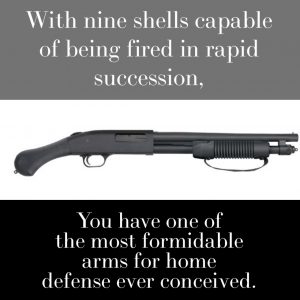What is a shorty shotshell?
A shorty shotshell is a shotgun shell about half the length of a traditional shell. Simple right? Well, this little shotgun shell has a lot more bang for its buck than it appears.
Shorty shotshells are also known as:
- short shotshells
- shorty shells
- mini shells
- mini shotshells
Are there different sizes of short shotshells? Yes. But it’s debatable whether you can even consider anything other than a 1.75-inch shotshell a true shorty shell. Brands that sell the popular 1.75-inch shells include Federal Shorty Shotshells, Aguila Minishell®, and Challenger Shortshell. Other sizes of shorter-than-normal shells include a 2.25-inch shell from Nobel Sport and a 2.5-inch shell from Kent — but again, these sizes are only a quarter (or so) of an inch smaller than a traditional shell, so they’re not typically considered shorty shells.
Why do gun owners love using shorty shotshells? Let’s just say it’s got a lot to do with recoil, capacity of rounds, and penetration.
How is a shorty shell different from a traditional shotgun shell?
As mentioned previously, shorty shells are typically 1.75-inches long, rather than 2.75-inches with traditional shotgun shells.
These mini shells have a much lower recoil — meaning you can enjoy firing away without as much shoulder jolt (and soreness) from that heavy shotgun kick. Low recoil is perfect for young folks learning to shoot or for specific practice purposes. They also allow for more load capacity in your shotgun. A Mossberg 590 Shockwave can typically hold five shells in the tube, but you can fit in about eight mini shells. Of course the amount of shorty shells you can fit in a feeding tube depends on the size of your shotgun. In a nutshell: the larger your shotgun tube, the more rounds you can enjoy, responsibly. We’ll “cheers” to that.
Which shotgun shell should you use for home defense?
There is some debate over whether shorty shotshells are best used for home defense, hunting, training, or entertainment. But while we agree that shooting with shorty shells are pretty damn fun to shoot in a Mossberg 500/590 and Mossberg Shockwave 12 gauge with an Opsol Mini Clip, they have a much bigger purpose than mere entertainment.
Mini shells with buckshot are typically used for home and personal defense — which is in line with all of Shockwave’s products. They don’t blow a huge hole in the wall because they have a more narrow and targeted area of penetration. They also have less power and velocity (but enough of it to a perfect fit for home defense). When it comes to Shockwave, we believe buckshot shorty shells are the way to go.

Even OPSol Mini Clip announces, “Home Defense for the Whole Family in 3 Easy Steps: 1. Mossberg 590 Shockwave, 2. OPSol Mini-Clip 2.0 Flex, 3. Buckshot MiniShells,” on the front page of their website. So if you have all three of those, you’re all set to protect your home and loved ones.
Which shotgun shell should you use for hunting?
Depending on what you’re wanting to hunt, you can find a variety of shotshell sizes that are loaded with different types of shot: buckshot, bird shot, or slugs.
While shorty shells are great for target practice and skeet shooting to prepare for your hunting trip, traditional shotgun shells have a longer shot range and velocity (hence, more recoil) that you might consider using during your hunting venture.
Are there specific guns that take shorty shells?
Most pump shotguns use mini shells but have been known to have some issues with short-cycling. However, the best shotguns that seem to use shorty shells flawlessly is the Mossberg 500/590 and Mossberg 590 Shockwave series with an OPSol Mini Clip, as mentioned previously.
The OPSol Mini Clip only goes on Mossberg firearms and is specifically designed so that you can use short shells without jams. Mini shells fit nicely in the bottom of this shotgun and prevents the shells from getting crooked, flipped, or out of place when cycling.
With less recoil, mini shells work great with the ergonomic design of the Raptor™ Grip, allowing for a more fun and overall better shooting experience.
